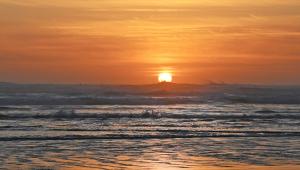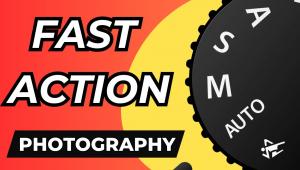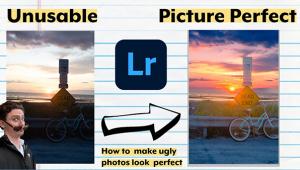Digital Help
Q&A For Digital Photography
Digital Help is designed to aid you in getting the most from your digital photography,
printing, scanning, and image creation. Each month, David Brooks provides solutions
to problems you might encounter with matters such as color calibration and management,
digital printer and scanner settings, and working with digital photographic
images with many different kinds of cameras and software. All questions sent
to him will be answered with the most appropriate information he can access
and provide. However, not all questions and answers will appear in this department.
Readers can send questions to David Brooks addressed to Shutterbug magazine,
through the Shutterbug website (www.shutterbug.com),
directly via e-mail to: editorial@shutterbug.com
or fotografx@mindspring.com
or by US Mail to: David Brooks, PO Box 2830, Lompoc, CA 93438.
Choosing A Laptop Computer For Digital Photography
This refers to the inquiry from John McNamara regarding the use of laptops for
digital photography (June 2006 issue of Shutterbug).
Currently I have Photoshop CS2 on both my Windows-based desktop and my 3-year-old
laptop--a Gateway 450 ROG. The laptop display isn't great but is
OK for work that isn't really critical (I can always redo the work later
on a better machine). And it is quite nice to be able to download and edit away
from home. Based on my experience, I'll make a few suggestions to consider
when choosing a laptop.
Be sure to select a brand that allows you to extensively customize the laptop
that interests you. Most of the manufacturers such as Dell, Sony, Gateway, and
HP offer extensive options. Get the fastest processor you can afford. Both Photoshop
and Photoshop Elements run best with lots of RAM--512MB of RAM is the bare
minimum; 1GB or 2GB would be much better. I think it would be wise to select
Windows XP Professional as your OS. It has a "Remote Desktop" feature
that lets you run your machine from another computer. I have found this to be
very helpful when away from home since I can conveniently run my programs on
my computer using machines with a really good display and a full-size keyboard
and mouse. This is important because the Notebook displays are small. Finally,
be sure you get a good graphic card.
I hope that this will help.
Richard Batchelor
Thank you for contributing to this discussion. The points you made should be
considered. And I would have to agree that careful evaluation of the choice
in model and specifications is essential for PC Windows users.
However, to be entirely candid, Apple has been producing laptop computers that
fully support professional graphics and photography with screen quality and
video "card" support quite comparable to their desktop models for
a number of years now, especially since they introduced the G4 PowerBook Titanium.
This should not be surprising considering Apple has about 85 percent or more
of the professional graphic and photographic computer market. The main reason
for that is performance and output quality.
Focusing Through A Microscope
Q. It's difficult to focus objects with a Nikon D70 digital SLR in a microscope
because the viewfinder is very small. In your opinion, should I use a DG-12
finder or add other equipment like Zigview to make focus easier?
Yono H. Agusni
A. I would assume you are using the microscope in a lab, so having
a computer close by should not be a problem. I would recommend that you install
the professional Nikon software that supports tethered camera operation. This
is done through the USB link between the camera and your computer. The Nikon
software provides the ability to operate the camera from the computer and to
preview what the camera sensor "sees" before initiating and saving
an exposed image.
Overkill?
Q. I am considering the purchase of a Nikon D50. My question is, if I buy a
super-expensive lens of top quality (say a fast, $1300 Nikon wide angle) will
it be overkill for the sensor? If I am correct, the top lenses of yesterday
out-resolved the film of the time so is it still the same today? With the film
camera, the lens was actually more important to the quality of the image produced
on the film than the body itself, but now, do we have to consider both for the
best image?
Brian
A. Your basic assumption of "overkill" is probably correct.
The limiting factor, given that the lens is well corrected for distortion, is
really the resolution of the sensor. Generally until you get into pricier digital
SLRs with 12 or more megapixel resolution, the advantage of a professional-grade
lens will not be markedly realized.
Compact Or SLR Digital Camera?
Q. I confess to being an equipment junkie to some extent, but I have a frugal
side. Thus, when the digital wave submerged the realm of film, I leapt, choosing
Canon because of my extensive Canon lens collection. I was less than thrilled
when I experienced the realities of sensor size, lens design, etc., and particularly
so when I found that within a week of buying an expensive body a newer and better
one was released.
I took a tiny Canon compact on a trip because I really dislike complicated traveling.
The built-in flash made copying paintings difficult, and when available light
was used it often generated really significant blurring.
I then remembered working with a Leica--its simplicity and results--and
had a realization that the apparent main reason for the development of the SLR
was the problem of parallax (between viewing and taking optical paths). Now
with digital it seems to me that with self-contained image screens parallax
should not be an issue, and along with it the complication of penta-prisms,
mirrors, etc. should not be necessary. Given the fact that almost all of the
digital SLRs are huge, heavy, and overly complex, I would think that a camera
with interchangeable lenses but devoid of the complexities of SLRs might be
the answer. What are your thoughts?
Jack Leissring
A. Your consideration of Leica-like cameras and digital "point-and-shoots"
has been discussed some in my column and has generated a lot of debate on the
Shutterbug website Forum. There is a limit, however, in current technology that
seems to preclude having a high-performance sensor that generates an image on
a rear LCD screen. Sony has made a technical breakthrough with new technology
that allows a high-performance imaging sensor to provide TTL image display on
a rear LCD panel, but it will take some time before this technology is widely
adopted or available. For now, consumer demand has not required manufacturers
to include the same level of quality in point-and-shoot designs that is available
in better digital SLRs.
Basic Computer Access To Digital Camera Files
Q. I am a high school junior just getting into digital photography. My question
is probably simple, but I can't seem to find an answer on the Sony website.
I have a Sony Cyber-shot camera that takes short video clips as well as photographs.
I plug the camera into the USB port. When I click on My Computer, I expect the
camera to show up as an external device. What I'm trying to do is copy
or move a certain video clip from the camera to the CD (or to a flash drive).
I can't seem to do this. Somewhere in all this it said I don't need
any more software installed, it's done by a Scanner and Fax Wizard. But
it isn't.
Can you tell me how to do this? It seems that it should be a simple and obvious
technique. Christopher
A. First of all, you should have Sony's Cyber-shot Viewer software
installed on your computer. You can check the installation CD that came with
the camera; otherwise you should be able to download the software from the Sony
website. This will provide Windows with the ability to recognize the MPEG file
format that the camera stores movie clips in, and to also view the content.
And the Viewer application on your computer will also support saving the file
to other media using the File/Save As command.

































